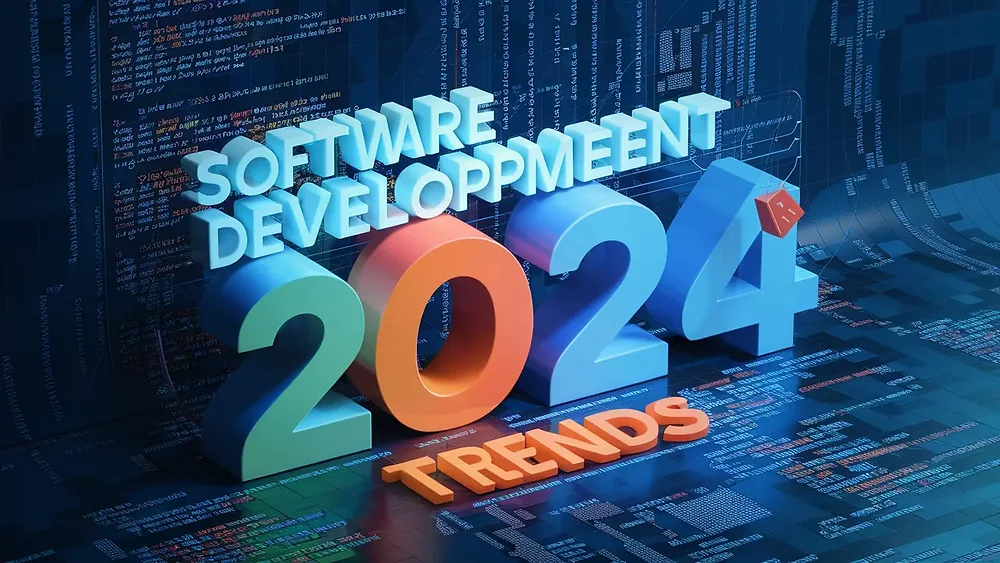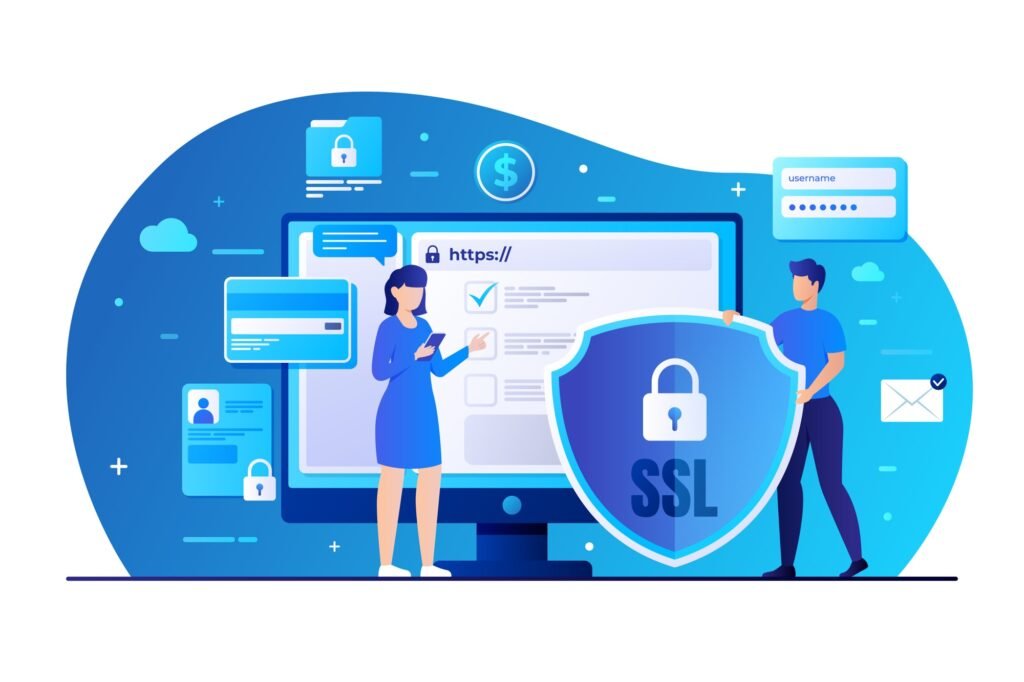As the software development landscape evolves, 2024 is set to bring some exciting trends that will shape the future of technology. These trends are driven by advancements in AI, cloud computing, and the need for more efficient, scalable, and secure solutions. Whether you’re a developer, tech lead, or an enterprise decision-maker, staying ahead of these trends is essential for building modern, cutting-edge software solutions.
In this blog, we’ll explore the top software development trends for 2024 and how they’re influencing the industry.
1. Artificial Intelligence and Machine Learning Integration
The integration of Artificial Intelligence (AI) and Machine Learning (ML) into software applications will continue to accelerate in 2024. AI and ML are no longer just buzzwords; they are integral to creating more intelligent and data-driven applications. Developers are increasingly leveraging AI for predictive analytics, automation, personalized experiences, and decision-making processes.
Key Focus Areas:
- AI-driven chatbots and virtual assistants
- Predictive analytics for business intelligence
- Automation in testing and DevOps (AIops)
- Enhanced cybersecurity using AI for anomaly detection
Why It Matters: AI and ML reduce the time spent on repetitive tasks, improve software efficiency, and enable intelligent decision-making across industries.
2. Low-code/No-code Development
The rise of low-code and no-code platforms is making it easier for non-technical users to build software applications. This democratization of software development allows businesses to create custom applications faster without relying on traditional coding techniques. In 2024, we can expect these platforms to become even more powerful, with the ability to handle more complex workflows.
Key Focus Areas:
- Simplified app development for businesses
- Increased use of drag-and-drop interfaces
- Customizable templates for rapid deployment
- Integration with AI for automation and personalization
Why It Matters: Low-code/no-code platforms accelerate the development process, allowing companies to quickly respond to market changes and demands without a heavy reliance on technical resources.
3. Edge Computing
With the growing adoption of IoT (Internet of Things) and the need for faster data processing, Edge Computing is gaining traction. By processing data closer to the source (at the “edge”), developers can reduce latency, improve real-time decision-making, and decrease the load on centralized cloud servers. In 2024, edge computing will see increased adoption in sectors like healthcare, manufacturing, and smart cities.
Key Focus Areas:
- Improved real-time processing for IoT devices
- Enhanced performance for applications in remote areas
- Integration with 5G for faster data transmission
- Reduction of cloud dependency
Why It Matters: Edge computing enhances performance, reduces latency, and supports applications that require real-time data processing, making it essential for industries relying on IoT devices.
4. Cloud-native Development and Multi-cloud Strategies
Cloud-native development and multi-cloud strategies will dominate in 2024 as businesses continue to migrate from traditional infrastructure to cloud-based services. Cloud-native applications are built and run in the cloud, providing greater scalability, flexibility, and cost-efficiency. Multi-cloud strategies involve using multiple cloud providers to avoid vendor lock-in and optimize resources.
Key Focus Areas:
- Adoption of Kubernetes and containerization for cloud-native development
- Increased use of serverless architecture
- Multi-cloud management platforms to streamline operations
- Greater focus on security in cloud environments
Why It Matters: Cloud-native development allows companies to build scalable and resilient applications, while multi-cloud strategies help businesses mitigate risk and leverage the best features from different cloud providers.
5. Microservices Architecture
Microservices architecture continues to be a popular choice for building complex and scalable applications. In contrast to monolithic architectures, microservices allow developers to break down an application into smaller, independent services that can be deployed and managed separately. This approach improves agility, scalability, and fault tolerance.
Key Focus Areas:
- Adoption of microservices for modular application development
- API-first approach for inter-service communication
- Use of containers and Kubernetes for microservices deployment
- Better DevOps practices for continuous integration and deployment (CI/CD)
Why It Matters: Microservices enable developers to build flexible, resilient applications that can be updated or scaled without affecting the entire system.
6. Cybersecurity: Zero Trust Architecture
As cyberattacks become more sophisticated, the adoption of Zero Trust Architecture is on the rise. This security model assumes that no user or device, whether inside or outside the organization, should be trusted by default. Zero Trust requires constant authentication and verification at every stage of interaction within the network.
Key Focus Areas:
- Implementation of multi-factor authentication (MFA)
- Continuous monitoring and network segmentation
- Encryption and tokenization of sensitive data
- AI-driven threat detection and response
Why It Matters: With an increased focus on security, Zero Trust Architecture ensures a robust defense against cyber threats by limiting access and continuously validating every user and device.
7. Quantum Computing
Quantum computing is still in its nascent stages but is poised to revolutionize industries that require complex computations. In 2024, quantum computing research will accelerate, especially in fields like cryptography, pharmaceuticals, and AI. While widespread adoption may take years, developers and businesses are starting to experiment with quantum algorithms to solve previously intractable problems.
Key Focus Areas:
- Exploration of quantum algorithms for optimization problems
- Quantum cryptography for enhanced security
- Use in drug discovery and material science
- Potential for solving complex data analysis tasks
Why It Matters: Quantum computing offers unparalleled computational power, enabling solutions to problems that are currently unsolvable using classical computers.
8. DevSecOps: Security in the Development Pipeline
In 2024, DevSecOps (Development, Security, and Operations) will become a key trend as businesses focus on integrating security into every stage of the software development lifecycle. Unlike traditional DevOps, which emphasizes speed and automation, DevSecOps ensures that security is baked into the process from the start, reducing vulnerabilities and enhancing compliance.
Key Focus Areas:
- Automation of security testing in CI/CD pipelines
- Shifting security to the left in the development process
- Integration of security tools into DevOps workflows
- Emphasis on compliance and data protection regulations
Why It Matters: As security threats evolve, DevSecOps helps businesses mitigate risk and ensure that applications are secure throughout the development lifecycle.
9. Blockchain Beyond Cryptocurrency
While blockchain is most commonly associated with cryptocurrencies, it’s finding new use cases in sectors like supply chain management, healthcare, and digital identity verification. In 2024, businesses will continue to explore the potential of blockchain for building secure, decentralized applications that can’t be tampered with or altered.
Key Focus Areas:
- Supply chain tracking and transparency
- Decentralized identity verification
- Smart contracts for automated transactions
- Blockchain as a service (BaaS) platforms
Why It Matters: Blockchain’s decentralized and immutable nature makes it an ideal solution for industries requiring high levels of trust and transparency.
10. Progressive Web Apps (PWAs)
Progressive Web Apps (PWAs) provide a seamless user experience by combining the best features of web and mobile apps. PWAs are fast, reliable, and engaging, and they can work offline or in low-network environments. In 2024, more businesses will adopt PWAs to enhance user engagement without the need for a dedicated mobile app.
Key Focus Areas:
- Fast load times and offline capabilities
- Improved mobile user experience
- Use of Service Workers and Web App Manifests
- Cross-platform compatibility
Why It Matters: PWAs offer businesses a cost-effective way to improve mobile engagement without investing in full-fledged mobile apps.
Conclusion
As we move into 2024, these software development trends will drive innovation and reshape how applications are built and delivered. Staying informed about these trends will help businesses stay competitive and developers create modern, secure, and scalable solutions.
Whether you’re looking to implement AI-driven features, explore cloud-native development, or enhance cybersecurity with Zero Trust, TechsterTech.com offers expert web development services to help you stay ahead of the curve.



